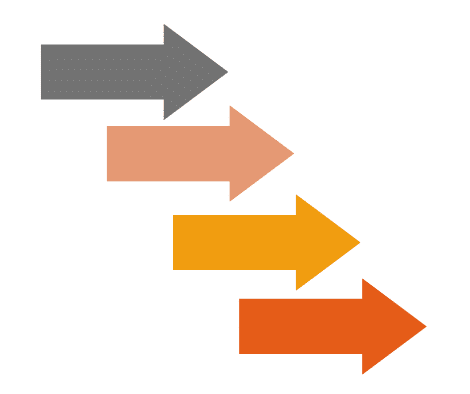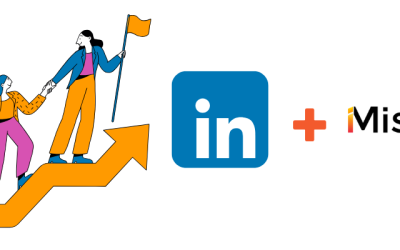It’s fundraising season so here at iMission, we wanted to provide a quick and easy How-To Guide for you to get your donor orientation campaign off the ground.
Let’s review the basics: what’s a donor orientation series?
It’s a series of emails – possibly automated emails– that nurture your leads and/or existing donors through a process to get them to complete a specific goal, like contributing financially to your organization, joining an affiliate group, or agreeing to help in your advocacy efforts.
Ideally, you will want to have this kind of orientation series running all year long, but you can also adapt your series for use within a targeted campaign. For example, if you have a virtual or in-person fun run, use an orientation series to continue to engage your volunteers or participants and encourage them to take the next step: donating.
What motivates donors to act?
- An appeal to their sense of altruism
- The feeling they get knowing their gift makes an impact
- The feeling of acting with a group of like-minded people
- A low hurdle to entry / ease and simplicity of the process
1. Identify Your Audience
Leads:
These are people who have given you their contact info, possibly via a volunteer portal, but who have not yet made a financial contribution to your organization.
Previous Donors:
These are people who have already donated at least one time to one of your outreach efforts, so they are familiar with you and your organization.
High Value Donors:
These are people who have given you large donations, possibly corporate sponsors, and whose donations may underpin one or more of your campaigns.
Your email series should be tailored to each one of these groups of donors.
You wouldn’t speak to them in the same way face-to-face, so be sure to craft specific messaging for each group.
2. Plan Your Campaign
What’s Your Objective?
Ask yourself what the specific goal is for each donor orientation campaign. Are you looking to measure
- # of new donors?
- Total number of donations?
- $ value of total donations?
A good place to begin the thought process is to look at your previous campaigns. Your results will establish a benchmark for your new campaign. Be clear about the metrics you are tracking and why.
3. Choose Your Landing Page
Landing pages should match your audience.
Just as you would speak differently to a lead who doesn’t yet know you well than you would to a long-time supporter, the landing pages you use in your campaigns should be thoughtful.
- Use the same language in your email as on the landing page – no surprises.
- Keep it simple. Too many choices cause people to make no choice at all, i.e abandon your donation page.
- Keep your branding and style consistent. The email and the landing page should both look like they come from you – there should not be a stylistic disconnect between the two.
4. Write your Email Copy
Each email in the series should have ONE focus. Don’t make the mistake of including three, four, or even more links to different pages on your site. Use ONE landing page link per email, and sprinkle it in the email a few times, or in a few different ways, like a text link and a button leading to the same landing page.
You want to use just one landing page link because the more links you add, the more you dilute your message and get people off the track of your goal. Your email series can be structured like this:
Email 1:
Focus on an appeal to altruism.
This is about the DONOR, not you.
Email 2:
Focus on impact.
How does their donation make a difference?
Email 3:
Focus on the donor’s self-interest.
How are others in your community supporting your mission?
Email 4:
Focus on a low-hurdle ask.
Make it easy and simple to give.

5. Consider Your Creative
Use your style guide.
Be sure your colors, fonts, photos and illustrations are part of your overall style. Personalize each email as much as possible, depending on who your audience is. Use photos from past events, think about th emood you’re setting with each email.
Consider the email “FROM” address in your email series. Who are the emails coming from within your org? Who is the thought-leader within your organization? Remember, you don’t need to use their real email address, you can set up an alias like info@yourorg.org but use your thought leader’s real name and title.
Play with subject lines. Create multiple subject lines for each email and poll your team on which are their favorites and why.
6. Set Your Timeline
For the 4-email series we’ve outlined above, we’ve had great success with the following timing:
Day 1: Launch email #1
Day 6: (+5 days from email 1) Launch email #2
Day 16: (+10 days from email 2) Launch email #3
Day 30: (+14 days from email 3) Launch email #4
This gives you 4 emails spaced out over a 30 day timeframe. You can test timing on these efforts to find the perfect fit for your organization, but in general, a 30 day series works well.
Keep in mind that you’ll want to segment out the people who are in your donor orientation series so they don’t also get other email series at the same time. You want to keep your focus on one thing at a time – keeping your donors engaged and motivated to support your organization.
If you have any questions on this email series, or are in need of assistance in building out a fundraising campaign, iMission is here to help. Contact us!



